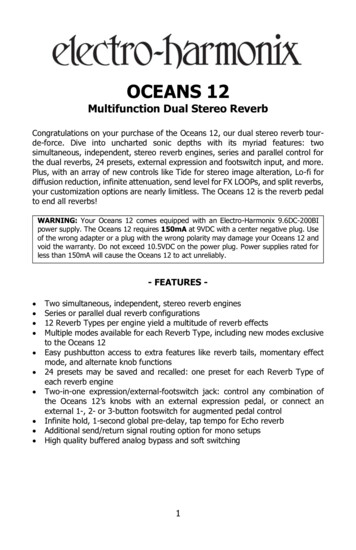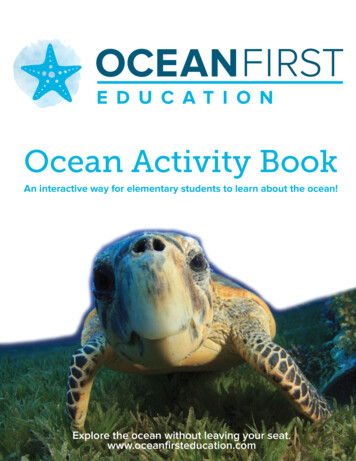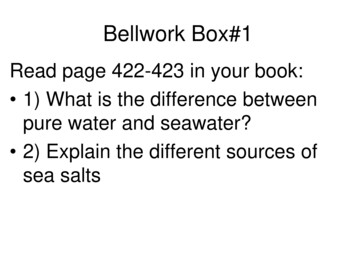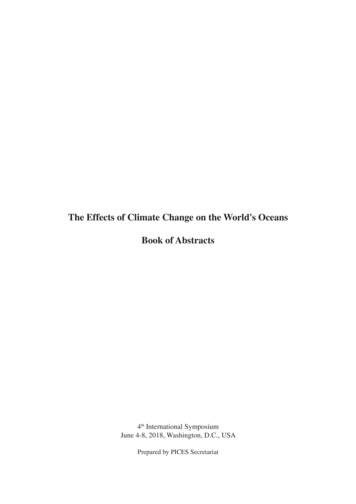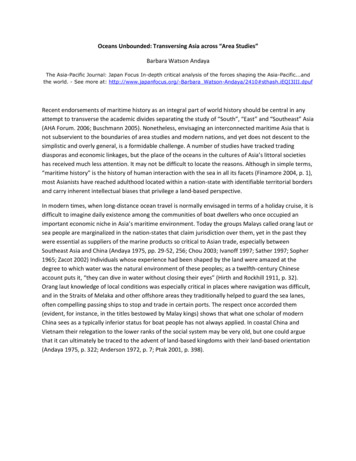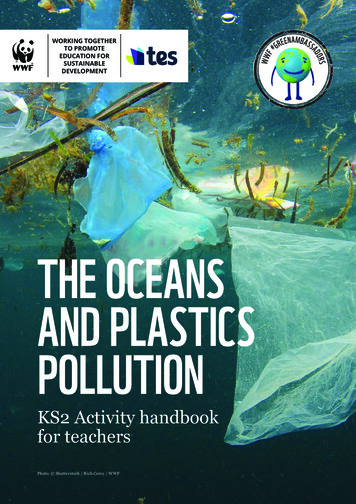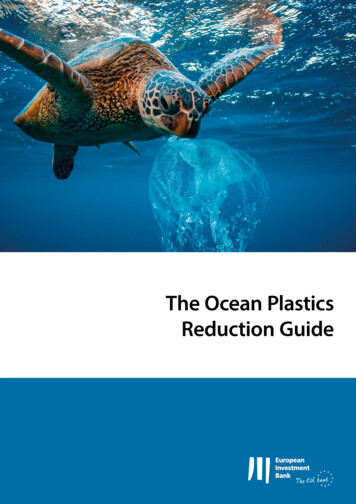
Transcription
The OceansChapter 15
What comes to mind when youthink “Oceans”?
Where did theoceans comefrom? Water has been present sinceEarth formed but not in liquidform.
Volcanoes released water vaporinto the atmosphere Water vapor condensed as theEarth cooled Condensed water rained downto the surface
What are theoceans? Hydrosphere is all of Earth’swater combined (including ice) Oceans make up 97% of all thewater on Earth. Oceans cover 71% of Earth’ssurface. The oceans are really oneconnected body of water. The ocean is salty, not pure
Major oceans Pacific Atlantic Indian Antarctic
Seas Smaller than oceans Partially or totally landlocked Examples: Mediterranean SeaGulf of MexicoBering SeaCaribbean Sea
Sea ice Sea ice is constantly changing Grows during winter Shrinks during summer Overall, ice is decreasingglobally. Ice is less dense than water soit floats This helps insulate the oceansand prevent them from freezingentirely
sea ice thickness vs. timeanimation
What are theproperties ofsea water? Salinity Salinity is a measure of themass of dissolved salts permass of water Measured in parts per thousand(ppt) or percent Recall that percent meansparts per hundred Sea water has an average salinityof 35 ppt or 3.5%
ocean salinities
Salinity varies from place toplace Evaporation increasessalinity Precipitation & melting seaice decrease salinity
Temperature The sun heats the ocean Water heats up more slowlythan air or land So, the ocean acts as aninsulator—it resists majorchanges in temperature This is why coastal areashave smaller swings intemperature betweenseasons. At the equator, the ocean getsmore direct sunlight so it’swarmer
map of ocean surfacetemperatures
ocean temperature vs. depth
Ocean temperatures rangefrom -2 C to 30 C. Averagetemp is 15 C Temperature decreases withdepth The deep ocean is always cold,everywhere on the globe Surface temperatures vary morebecause of differences in sunexposure
Light absorption Water absorbs light Red light gets absorbed first, inshallow waters Blue light gets absorbed last, indeep waters Almost no light penetratesbelow 100 meters
light absorption at various depths
What createsocean zones? Ocean zones are determined bylight and distance from thecoast. Most organisms live at the surfacewhere it’s light and warm.
organisms & ocean zones
creatures of the deep seavideo clip
How does theocean move? Waves All waves transfer energy Waves are causes by wind orearthquakes (tsunami!). The water moves up & down incircle, but the energy movesforward. Waves break when theyexperience friction against theocean floor in shallower water.
waves moving & breakinganimation Animation will open in an external window(exit slideshow to view)
Currents A current is the movement of abody of water in a specificdirection Density currents Ex. Cold salty Arctic watersinks Surface currents are driven bywind Ex. Trade winds in the tropics
major ocean currentsanimation
Gyres A gyre is a circular current Gyres are the result of currentsbeing deflected by continents There are five major gyres
Now, use your book to label thefollowing on your “Global Winds andOcean Currents” worksheet: The California CurrentThe North Atlantic CurrentThe North Pacific GyreThe South Pacific GyreThe North Atlantic GyreThe South Atlantic GyreThe Indian Ocean Gyre
Tides Tides are the periodic rise andfall of sea level. Tides are caused by thegravitational attraction amongthe Earth, moon, and sun. The moon & sun pull on Earth’soceans. High tide occurs where theoceans bulge.
effect of sun & moon on tidesanimation
Light absorption Water absorbs light Red light gets absorbed first, in . use your book to label the following on your “Global Winds and Ocean Currents” worksheet: . oceans. High tide occurs where the oceans bulge. e


